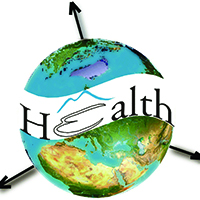The impact of geographic mobility on the spread of COVID-19 in Hong Kong

Submitted: 22 May 2021
Accepted: 3 December 2021
Published: 14 February 2022
Accepted: 3 December 2021
Abstract Views: 2259
PDF: 249
HTML: 76
HTML: 76
Publisher's note
All claims expressed in this article are solely those of the authors and do not necessarily represent those of their affiliated organizations, or those of the publisher, the editors and the reviewers. Any product that may be evaluated in this article or claim that may be made by its manufacturer is not guaranteed or endorsed by the publisher.
All claims expressed in this article are solely those of the authors and do not necessarily represent those of their affiliated organizations, or those of the publisher, the editors and the reviewers. Any product that may be evaluated in this article or claim that may be made by its manufacturer is not guaranteed or endorsed by the publisher.
Similar Articles
- Olga De Cos, Valentín Castillo-Salcines, David Cantarero-Prieto, A geographical information system model to define COVID-19 problem areas with an analysis in the socio-economic context at the regional scale in the North of Spain , Geospatial Health: Vol. 17 No. s1 (2022): Special issue on COVID-19
- Chunhui Liu, Xiaodi Su, Zhaoxuan Dong, Xingyu Liu, Chunxia Qiu, Understanding COVID-19: comparison of spatio-temporal analysis methods used to study epidemic spread patterns in the United States , Geospatial Health: Vol. 18 No. 1 (2023)
- Ahmad Raeesi, Behzad Kiani, Azam Hesami, Ladan Goshayeshi, Neda Firouraghi, Shahab MohammadEbrahimi, Soheil Hashtarkhani, Access to the COVID-19 services during the pandemic - a scoping review , Geospatial Health: Vol. 17 No. s1 (2022): Special issue on COVID-19
- Behzad Kiani, Colleen Lau, Robert Bergquist, From Snow’s map of cholera transmission to dynamic catchment boundary delineation: current front lines in spatial analysis , Geospatial Health: Vol. 18 No. 2 (2023)
- I Gede Nyoman Mindra Jaya, Yudhie Andriyana, Bertho Tantular, Post-pandemic COVID-19 estimated and forecasted hotspots in the Association of Southeast Asian Nations (ASEAN) countries in connection to vaccination rate , Geospatial Health: Vol. 17 No. s1 (2022): Special issue on COVID-19
You may also start an advanced similarity search for this article.

 https://doi.org/10.4081/gh.2022.1022
https://doi.org/10.4081/gh.2022.1022







